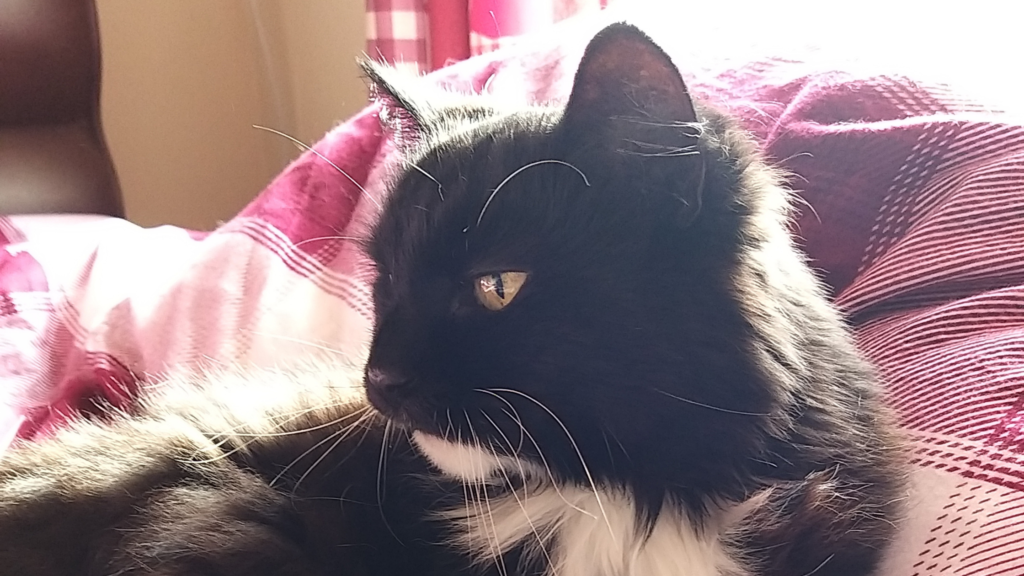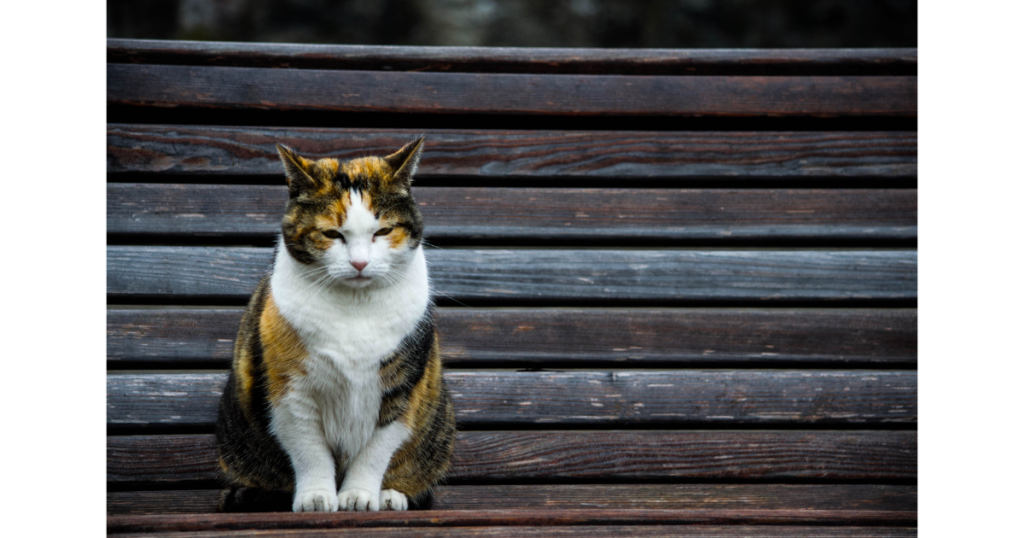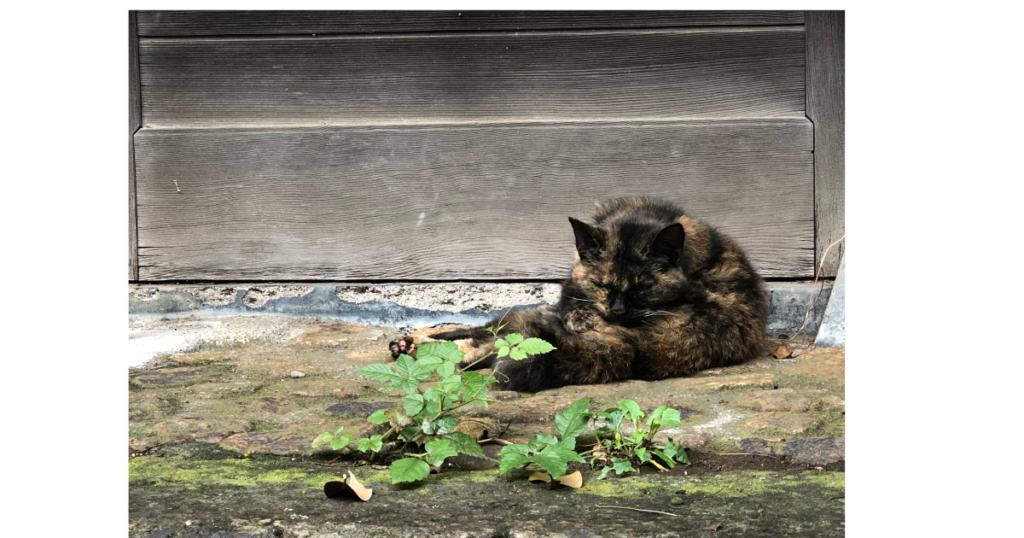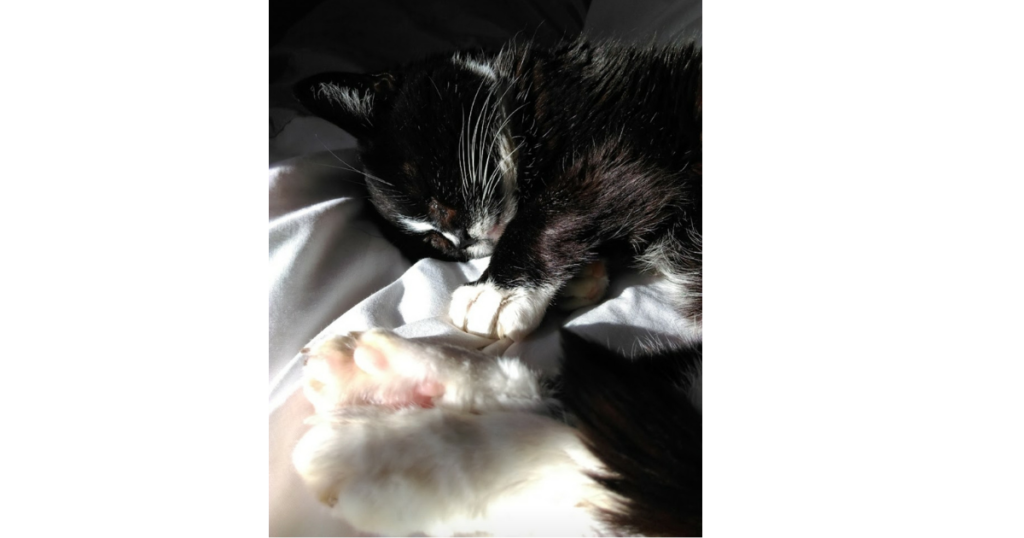
Most owners start to notice changes as their cat grows older; an increased number of hours sleeping, a reduced amount of time outdoors and generally opting for a slower, more laid-back lifestyle. These changes are generally expected with age however, there are some other age-related changes (those not so obvious) which if unnoticed or ignored may negatively affect your cat’s quality of life.
This article will help you to recognise some of the less obvious changes and what you can do to ensure your senior cat experiences a rich quality of life.
The Senior Cat (11+ years)
As you may know, cats are masters of hiding pain (an instinctive behaviour to hide vulnerability) which often makes it difficult to spot if your cat is struggling. With this in mind it is vital to develop your cat detective skills and be on high alert for those harder to spot signs. Some of these more significant changes may include your cat becoming less tolerant of fuss, less playful, no longer accessing their preferred places, changes in their eating & drinking habits, grooming less or becoming more vocal. As an owner, the worst mistake you can make is to assume that these changes are simply inevitable and ignore them.
There are many things we can do to help our ageing cats to live a comfortable and pain-free life, despite their age; something every living soul deserves (animal or human)!
Age related pain and discomfort is only inevitable if you choose to ignore it. Don’t choose to ignore the signs that your cat is struggling – there’s so much you can do to help!
2Sox’s story
2Sox is my old girl, aged 17 (pictured above). A while ago I realised that she was spending a lot less time in her favourite places (bedroom windowsill, airing cupboard and settee). A few times I spotted her approaching these places, positioning herself ready to jump up, but then choosing to walk away. A check-up at the vets revealed that 2Sox has some age-related muscle wastage and osteoarthritis. No wonder she was avoiding the jumps! Within a week of starting some basic and inexpensive treatment, 2Sox began making the jumps back to her favourite places. I also rearranged some items at home which she can use like steps if she prefers, instead of making big jumps.
Therefore despite her age, 2Sox can still access her favourite areas in the house without experiencing pain or frustration. Result!
Signs that your senior cat might be struggling
There are often various changes in behaviour (clues) that your cat is experiencing physical or emotional distress (or both)! Overtime you may notice one or more of the following and it’s important to discuss these changes with a vet even if your cat appears to be coping (remember their mastery of concealing pain)!
Avoiding their favourite places
Appearing to misjudge jumps/distances
Lack of grooming (fur becoming matted and/or dirty)
Eating more or less than usual
Changes in weight
Increased drinking
Becoming less tolerant of human interaction/encounters with other pets (perhaps showing aggression)
Less interested in fuss or play
Toileting accidents (including missing the litter tray)
Becoming more vocal than normal
Appearing to be disorientated (finding your cat in unusual places, seemingly confused)
Your observation skills are really important as you know what is ‘normal’ for your cat. Some changes may occur quite gradually, so it’s important to be alert. To help your vet accurately assess your cat’s condition, make sure you report exactly what your cat is doing and avoid attempting to guess why. For example, you might tell the vet ‘My cat has started to make a loud wailing sound just before bedtime each night’ this is more reliable than ‘My cat is attention seeking loudly before bedtime each night’ as this is an assumption.

Never ignore changes in your cat’s behaviour, even if they appear to be coping as these signs often reveal an underlying condition.

Top Tip – if you have video footage of your cat’s behaviour, this may help your vet in assessing their condition.
What happens to cats as they age?
Like humans, cats are prone to numerous degenerative conditions as they age, affecting both their physical and mental state.
Physical conditions may include osteoarthritis, hyperthyroidism, chronic kidney disease, dental disease, hypertension, gastrointestinal disease and some cancers.
In addition, cats may also experience a degenerative brain condition known as Cognitive Dysfunction which can lead to a decline in their cognitive ability, such as that you would associate with senility or dementia.
Having been fortunate to live with many senior and super senior cats (including 2Sox currently) I have seen signs of cognitive dysfunction present in the following ways.
- Wailing. A loud, drawn-out vowel sounding noise often made for no apparent reason (usually stops upon me entering the room & offering some reassuring fuss).
- Confusion (often alongside the wailing). Examples include the apparent confusion of location, such as standing in the bathroom after I’d gone to bed (instead of following me) and sitting backwards on the arm of the chair (facing the back).
- Increased sleeping. During the latter months of life, cats may sleep for increased periods of time, often in a much deeper sleep. Sometimes I’d lie next to Whoopie and stroke her for 30 seconds or so before she woke up.
- More demanding for attention/company, often claiming frequent and increased lap time (including laps of humans previously ignored)! Whoopie would often follow me about and appear restless until we eventually snuggled down together.
Cats may also show signs of irritability and/or aggression if they feel less confident & more vulnerable than they used to; perhaps if less physically able, hard of hearing or experiencing poorer eyesight. Older cats may also show aggression if they are experiencing discomfort such as arthritic pain.
12 ways to ensure your senior cat feels safe, happy, loved and pain-free!
- Regular check-ups with your vet are essential in providing the best care for your deserving senior. Don’t be tempted to avoid this simply because your cat doesn’t like going to the vets! There are lots of ways that you can make this less stressful, starting with helping your cat to feel less stressed in their carrier
- Spend time noticing what your cat is doing and compare this with what they’ve always done. This is a good way to recognise less obvious changes that may have occurred gradually over time.
- Video the behaviours that you think are unusual for your cat and discuss them with your vet
- Make sure your cat can access their ‘essentials’ with ease (food, water, litter tray and bed). Consider places that are quiet and easy to get to (perhaps away from children and other pets)
- Provide drinking facilities in more than one place to help your cat stay hydrated (I put bowls upstairs, downstairs and in the garden)! Shallow ceramic bowls are best for water, filled right to the top.
- Be creative and rearrange things in the home to replicate steps (or a ramp) for your cat.
- Make sure that others in your home are considerate, kind and patient with your senior cat.
- Provide extra litter trays to avoid accidents. Consider the height of the tray and whether your cat can climb in easily.
- Feed your cat a senior diet (unless a specific diet has been recommended or prescribed by your vet). Thanks to scientific research, age specific diets enable us to provide the appropriate nutrition for every stage of our cat’s life.
- Encourage your cat to play. Just because they are old, it doesn’t mean that their instinctive desires to hunt and seek reward have disappeared! Instigate some gentle play and introduce puzzle feeding to awaken their senses. Don’t believe me? Give it a go!
- Make sure your ageing friend has lots of safe and snuggly places to snooze or hide.
- Always be kind and patient with your ageing cat. NEVER punish any behaviours (regardless of age) and show them the respect that you hope to have when you are older and more fragile.
To have a cat who reaches a fine old age is a wonderful gift. Treasure these moments and enjoy the privilege of seeing them live out their senior lives feeling happy, safe, loved and pain-free!
In loving memory of some very special senior cats
During my lifetime I’ve been lucky to share a home with numerous senior cats and have witnessed the once avid hunter, super-skilled sausage thief and flexible armchair gymnast evolve into a slower, more laid-back version of their former selves (although in my experience, sausage stealing skills rarely diminish with age)!
In loving memory of my beautiful old girls; Sooty, Minnie, Friday and Whoopie (pictured below).

If you are interested in the different life stages of cats and how these compare these with human years you’ll enjoy this article by International Cat Care.
